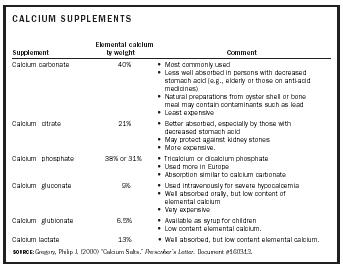Mar 14
21

Calcium is vital in maintaining the density of our bones and teeth. Calcium requirements vary into the different stages of life. However, recent research has revealed that only about 10% of individuals are close to meeting the daily calcium requirements. This means a big amount of the population into the US is at threat of developing osteoporosis later in life. Doctors stress the significance of meeting daily calcium requirements to prevent osteoporosis – a crippling disease usually affecting the elderly starting the age of 50 and older. More than $13 billion is spent on health insurance services in treating bone fractures as a consequence of osteoporosis.
Well, maybe science really hasn’t changed its stand with this, but just to point out, dairies are not our only option. Our need for calcium is not undeniable. Just since you are milk lovers early on in your lives, do not mean which you don’t have any use for calcium when you can get older. Truth is, the older you become, the greater your calcium requirement. this is certainly because your body tends to “fix” and remodel bones as your age increases. The severity of the process would rely on the condition of the bones. If you were a fan of calcium rich foods when you were younger, chances are, there won’t be too much remodeling. Those who saved up little calcium would reap the consequences. Obviously these are typically more likely to have weaker bones, and fixing them will be an inevitable thing.
Toddlers from age 1-3 years of age have daily calcium requirements of 500mg. Preschool and younger school age children, age 4-8 years of age, has a daily calcium requirement of 800mg, older school age children and adolescents, age 9-18, need 1300mg of calcium a day. Calcium is especially crucial during the growth spurt age in puberty when teens are most active.
There are tons of sources for high calcium diet into the foods one eat, including dairy foods and non-dairy foods. The content of calcium in food differ based on components from a lot of foods, which means that some food could have more or little calcium content with various brands.
Foods with calcium such as vegetables, nuts, and seeds are good sources of calcium, and ought to be incorporated into ones prepared calcium diet as well. The calcium contained in vegetables with low oxalate such as kale, is well absorbed by your body compared to calcium in cow’s milk. One can also include calcium supplements to add-on to the calcium diet if the dietary sources are inadequate.
Several food products, such as breads and orange juice, are enriched with calcium to supply a calcium source for people who dislike dairy or cannot tolerate it. Lactose-free milk and cheese is also available. Individuals who are lactose intolerant have trouble digesting the sugarin milk, which is known as lactose.
High calcium diet is very essential for maintaining healthy bones, teeth, and body. a great calcium diet should contain sufficient amounts of calcium required by the body either through combining high calcium food sources and calcium supplements, or just sticking with natural calcium-filled foods. Never forget though, that too much of anything is bad, including calcium. So stick aided by the needed and required amounts of calcium and don’t overdo it.
